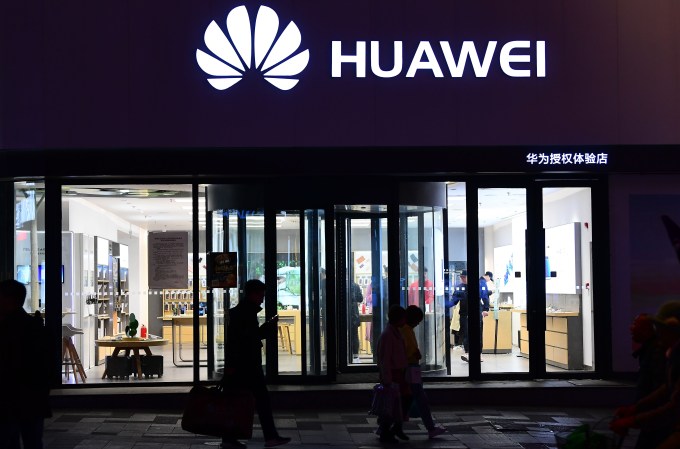When the hell did building a house become so complicated?
Don’t let the folks on HGTV fool you. The process of building a home nowadays is incredibly painful. Just applying for the necessary permits can be a soul-crushing undertaking that’ll have you running around the city, filling out useless forms, and waiting in motionless lines under fluorescent lights at City Hall wondering whether you should have just moved back in with your parents.
Consider this an ongoing discussion about Urban Tech, its intersection with regulation, issues of public service, and other complexities that people have full PHDs on. I’m just a bitter, born-and-bred New Yorker trying to figure out why I’ve been stuck in between subway stops for the last 15 minutes, so please reach out with your take on any of these thoughts: @Arman.Tabatabai@techcrunch.com.
And to actually get approval for those permits, your future home will have to satisfy a set of conditions that is a factorial of complex and conflicting federal, state and city building codes, separate sets of fire and energy requirements, and quasi-legal construction standards set by various independent agencies.
It wasn’t always this hard – remember when you’d hear people say “my grandparents built this house with their bare hands?” These proliferating rules have been among the main causes of the rapidly rising cost of housing in America and other developed nations. The good news is that a new generation of startups is identifying and simplifying these thickets of rules, and the future of housing may be determined as much by machine learning as woodworking.
When directions become deterrents

Photo by Bill Oxford via Getty Images
Cities once solely created the building codes that dictate the requirements for almost every aspect of a building’s design, and they structured those guidelines based on local terrain, climates and risks. Over time, townships, states, federally-recognized organizations and independent groups that sprouted from the insurance industry further created their own “model” building codes.
The complexity starts here. The federal codes and independent agency standards are optional for states, who have their own codes which are optional for cities, who have their own codes that are often inconsistent with the state’s and are optional for individual townships. Thus, local building codes are these ever-changing and constantly-swelling mutant books made up of whichever aspects of these different codes local governments choose to mix together. For instance, New York City’s building code is made up of five sections, 76 chapters and 35 appendices, alongside a separate set of 67 updates (The 2014 edition is available as a book for $155, and it makes a great gift for someone you never want to talk to again).
In short: what a shit show.
Because of the hyper-localized and overlapping nature of building codes, a home in one location can be subject to a completely different set of requirements than one elsewhere. So it’s really freaking difficult to even understand what you’re allowed to build, the conditions you need to satisfy, and how to best meet those conditions.
There are certain levels of complexity in housing codes that are hard to avoid. The structural integrity of a home is dependent on everything from walls to erosion and wind-flow. There are countless types of material and technology used in buildings, all of which are constantly evolving.
Thus, each thousand-page codebook from the various federal, state, city, township and independent agencies – all dictating interconnecting, location and structure-dependent needs – lead to an incredibly expansive decision tree that requires an endless set of simulations to fully understand all the options you have to reach compliance, and their respective cost-effectiveness and efficiency.
So homebuilders are often forced to turn to costly consultants or settle on designs that satisfy code but aren’t cost-efficient. And if construction issues cause you to fall short of the outcomes you expected, you could face hefty fines, delays or gigantic cost overruns from redesigns and rebuilds. All these costs flow through the lifecycle of a building, ultimately impacting affordability and access for homeowners and renters.
Startups are helping people crack the code

Photo by Caiaimage/Rafal Rodzoch via Getty Images
Strap on your hard hat – there may be hope for your dream home after all.
The friction, inefficiencies, and pure agony caused by our increasingly convoluted building codes have given rise to a growing set of companies that are helping people make sense of the home-building process by incorporating regulations directly into their software.
Using machine learning, their platforms run advanced scenario-analysis around interweaving building codes and inter-dependent structural variables, allowing users to create compliant designs and regulatory-informed decisions without having to ever encounter the regulations themselves.
For example, the prefab housing startup Cover is helping people figure out what kind of backyard homes they can design and build on their properties based on local zoning and permitting regulations.
Some startups are trying to provide similar services to developers of larger scale buildings as well. Just this past week, I covered the seed round for a startup called Cove.Tool, which analyzes local building energy codes – based on location and project-level characteristics specified by the developer – and spits out the most cost-effective and energy-efficient resource mix that can be built to hit local energy requirements.
And startups aren’t just simplifying the regulatory pains of the housing process through building codes. Envelope is helping developers make sense of our equally tortuous zoning codes, while Cover and companies like Camino are helping steer home and business-owners through arduous and analog permitting processes.
Look, I’m not saying codes are bad. In fact, I think building codes are good and necessary – no one wants to live in a home that might cave in on itself the next time it snows. But I still can’t help but ask myself why the hell does it take AI to figure out how to build a house? Why do we have building codes that take a supercomputer to figure out?
Ultimately, it would probably help to have more standardized building codes that we actually clean-up from time-to-time. More regional standardization would greatly reduce the number of conditional branches that exist. And if there was one set of accepted overarching codes that could still set precise requirements for all components of a building, there would still only be one path of regulations to follow, greatly reducing the knowledge and analysis necessary to efficiently build a home.
But housing’s inherent ties to geography make standardization unlikely. Each region has different land conditions, climates, priorities and political motivations that cause governments to want their own set of rules.
Instead, governments seem to be fine with sidestepping the issues caused by hyper-regional building codes and leaving it up to startups to help people wade through the ridiculousness that paves the home-building process, in the same way Concur aids employee with infuriating corporate expensing policies.
For now, we can count on startups that are unlocking value and making housing more accessible, simpler and cheaper just by making the rules easier to understand. And maybe one day my grandkids can tell their friends how their grandpa built his house with his own supercomputer.
And lastly, some reading while in transit:
- No One at the Wheel: Driverless Cars and the Road of the Future – PublicAffairs, Samuel I. Schwartz
- The Yellow Vests and Why There Are So Many Street Protests in France – The New Yorker, Adam Gopnik
- Congress Needs to Tighten Up AV Legislation – GovTech Future Structure, San Jose Mercury News & East Bay Times Editorial Board
- Uber Doesn’t Have to Follow Pan Am’s Tragic Arc – Bloomberg Opinion, Gillian Morris & Christina Heggie
- What Venice Can Teach American Cities – The Atlantic, James H. S. McGregor
- Blockchain Technology in the Energy Sector: A Systematic Review of Challenges and Opportunities – Renewable and Sustainable Energy Reviews, Merlinda Andoni, Valentin Robu, David Flynn, Simone Abram, Dale Geach, David Jenkins, Peter McCallum, Andrew Peacock
https://ift.tt/2UrrboW Why you need a supercomputer to build a house https://ift.tt/2rAo5BX







 It’s only been less than a year since the company
It’s only been less than a year since the company 
 The company tells me it had heard feedback from the community in Thailand that Live video helped sellers demonstrate how items could be used or worn, and provided richer understanding than just using photos. Users also told Facebook that Live’s interactivity let customers instantly ask questions and get answers about product specifications and details. Facebook has looked to Thailand to test new commerce experiences like
The company tells me it had heard feedback from the community in Thailand that Live video helped sellers demonstrate how items could be used or worn, and provided richer understanding than just using photos. Users also told Facebook that Live’s interactivity let customers instantly ask questions and get answers about product specifications and details. Facebook has looked to Thailand to test new commerce experiences like 




















